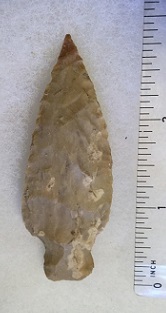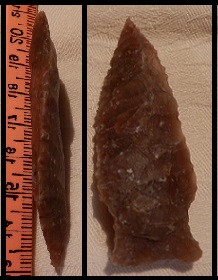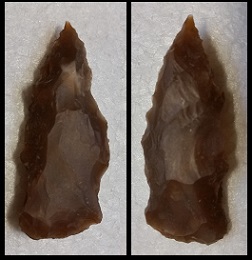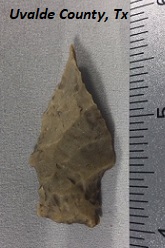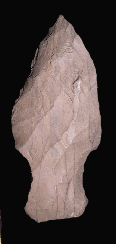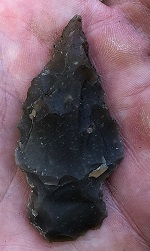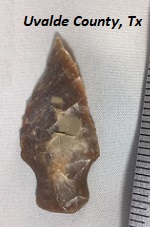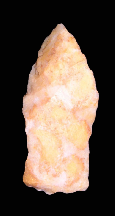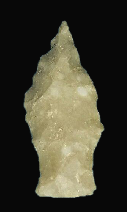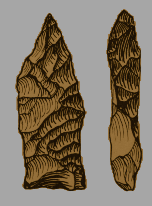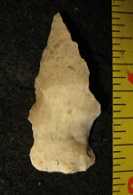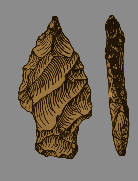Name Details:
Named By: J. Charles Kelley
Named For: Area examples were found
Date Identified: 1954
Type Site: Pandale, Val Verde County, Texas
Pandale
AKA: Pandale Twisted Blade
Cluster: Pandale Cluster
Commonly Utilized Material:
Date:
Cultural Period:
6,000 - 4,700 B.P.
Early to Middle Archaic
Middle Holocene to Neoglacial
Glacial Period:
Culture:
Outline is Representative of Size and Shape:
Description of Physical Characteristics and Flaking Pattern:
This is a small to medium
lanceolate point with an expanding stem. The cross section of this point is elliptical. The
long slender blade is excurvate and is
commonly beveled on one blade of each face which give this point it's
characteristic twisted blade. Many examples have an acute tip or a needle appearance. The shoulders are weak to absent and at an upward
angle. The stem is expanding with a straight to slightly concave base. The stem is commonly beveled on the opposite side that the blade is beveled on. This point is commonly crudely made and has a flaking pattern may vary from oblique to random.
Size Measurements: Total Length - 35 to 90 mm, Stem Length -
10 to 25 mm (typically 1/7 to 1/3 of the total length), Width - 15
to 30 mm, Stem Width - 10 to 15 mm (Suhm and Krieger, 1954).
Distribution:
Distribution Comments:
This point is primarily found in the lower Pecos and
the upper Rio Grande regions of Texas, Coahuila, Chihuahua and into New
Mexico. This point has decreased frequency into the Edwards
Plateau.
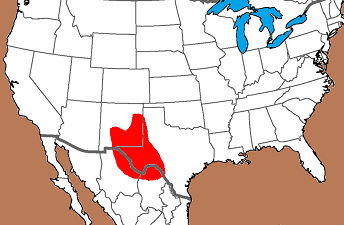
Related / Associated Points:
Nolan Additional Comments:
Suhm and Krieger (1954), point out that even though many points of different
types may have the twist seen on the Pandale point, this is due to the
original flake not being flattened. The Pandale point is intentionally
chipped to have the twist.
This point is similar to the Nolan point, but the Nolan point lacks the beveled blades
seen on the Pandale. The Travis point is similar in outline, but it also lacks the
beveling and twisted blade.
Other points in this Cluster:
Point Validity: Valid Type
Kelley was a distinguished
anthropologist who served as Curator of the Archaeological Museum at the University of Texas-Austin and was instrumental in setting up the Department of Anthropology at the University of Texas-Austin. He specialized in the archaeology of western Texas. This type was named in a professional publication and has many professional references. This is considered a valid type.
.
Age Details:
References: (See Reference Page, Entry Number):
8,
23, 30, 39, 115, 177, W11
Pandale Projectile Point, Pandale Arrowhead

